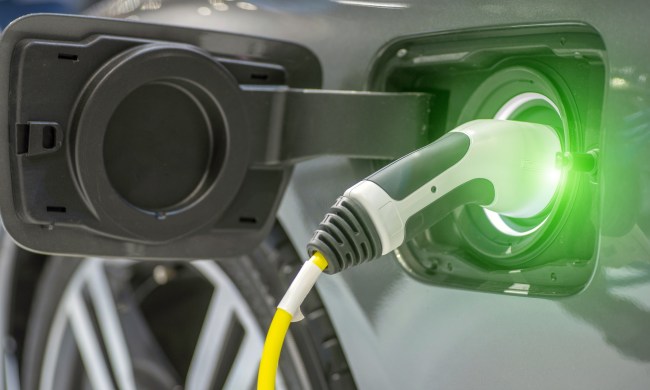The DeLorean DMC-12 sports car made famous by the Back to the Future franchise could make a comeback as an electric vehicle. A Texas-based company currently owns the rights to the stainless-steel sports car, and has been working for years to bring it back. The original plan was to use a conventional gasoline engine, but now an electric DeLorean is a real possibility, the company said in a blog post.
DeLorean production ended in 1982, and bringing back a car from that period would normally be impossible, because it wouldn’t meet current safety and emissions standards. However, the new DeLorean Motor Company has lobbied for the Low Volume Motor Vehicle Manufacturers Act — which is part of the Fixing America’s Surface Transportation (FAST) Act — which allows boutique companies to build limited numbers of replica vehicles. The rules were just finalized, but that still left the revived DeLorean firm with a problem.
Delays in finalizing of the rules mean DeLorean can’t use the engine it had originally planned on. The company began lobbying for passage of the FAST ACT in 2015, with the goal of relaunching the DMC-12 in 2017, using an engine that was emissions-compliant through 2022. While the company believes this unspecified engine could get an extension through 2024, it still feels the engine is too close to the end of its life cycle.
Hence an electric powertrain. The company said it is “considering” that option but hasn’t made a final decision. An electric powertrain would eliminate the red tape of emissions testing, the company said, noting that it already showed an electric DeLorean prototype in 2012. At the time, the company claimed a 200-mile range and a “sub-5.0-second” zero-to-60 mph time. Stanford University engineers even created an electric self-drifting DeLorean.
An electric DeLorean is far from a sure thing, though. The company blog post noted that it may be difficult to find funding due to the coronavirus pandemic and associated economic meltdown. Even if the car goes back into production, you’ll have a hard time finding one. FAST Act rules limit production to 325 vehicles for the United States market per calendar year.
Electric conversions of vintage cars are getting popular, with everything from the humble Volkswagen Beetle to Rolls-Royce luxury cars getting the zero-emission treatment.


